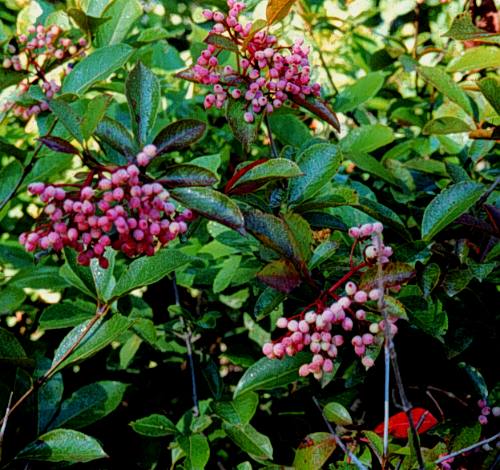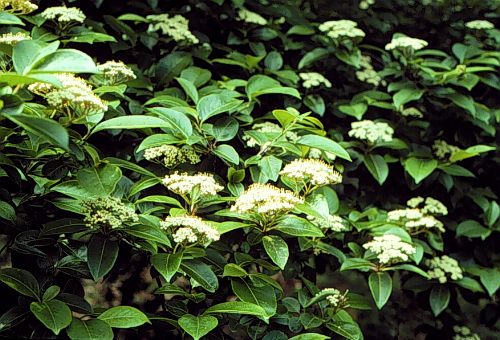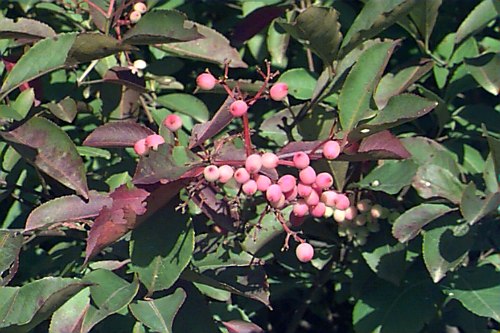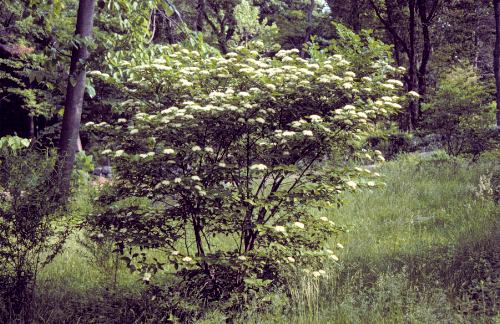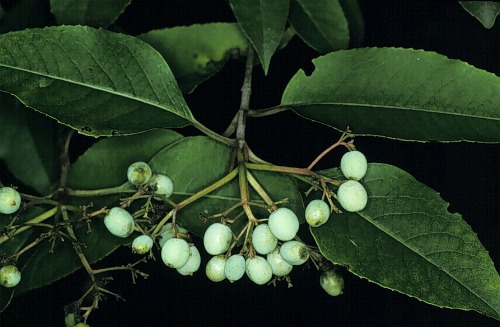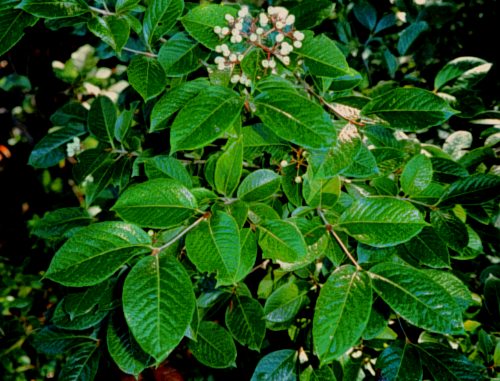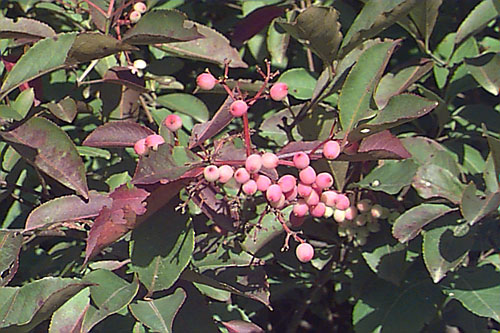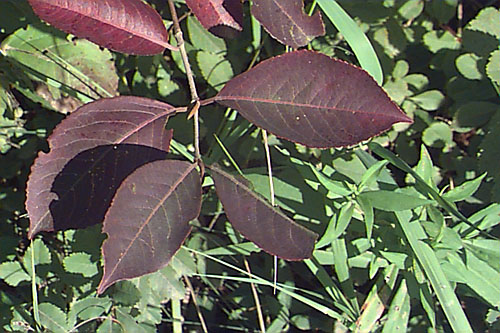Viburnum cassinoides
Witherod Viburnum
Caprifoliaceae
ExpandHabitat
- native to eastern United States
- cold hardy to zone 3
Habit and Form
- a dense, multistemmed shrub
- 5' to 6' tall
- equal spread
- dense, rounded crown
- arching branches
- medium texture
- moderate growth rate
Summer Foliage
- opposite leaf arrangement
- simple, deciduous leaves
- elliptic leaf shape
- 1.5" to 3.5" long
- new growth reddish
- dull green leaf color
Autumn Foliage
- red to purple fall color
- showy
Flowers
- creamy white flowers
- borne in 2" to 5" flat-topped cymes,
- blooms in late June
- showy
Fruit
- pink fruit, changing to black
- matures in September
Bark
- brown stems
- rough
- nondescript
Culture
- very easy to grow
- full sun to partial shade
- soil adaptable from dry to fairly wet
- easily transplanted
Landscape Use
- useful for its extreme durability
- border
- screen
- naturalizing
- parking lots
- mass plantings and groupings
- to attract birds
- provides a nice neutral effect in the landscape
- difficult sites
Liabilities
- free from serious problems
- may need occasional rejuvenation pruning
ID Features
- opposite leaves
- blue-black fruits in flat clusters
- dense, twiggy, suckering habit
- flat clusters of small creamy white flowers
- valvate flower buds similar to V. lentago
- vegetative buds valvate, long and narrow
Propagation
- by cuttings
- by seed
Cultivars/Varieties
var. angustifolium - This variant grows slower and more open than the species, though its most notable feature is the elongated, more narrow leaves.
'Deep Pink' - This selection features deep pink fruit and was discovered in Maine by Connecticut nurseryman, Mike Johnson.
The following are selections of Viburnum nudum, a species closely allied to V. cassinoides that some authorities include with the species.
'Count Pulaski' - This open-growing plant offers larger, glossy leaves and wonderful fruit that pass through shades of pink, lavender, blue and black.
'Winterthur' - A recent introduction that has become popular, this is a dense shrub that bears glossy leaves and ample quantities of colorful fruit.
